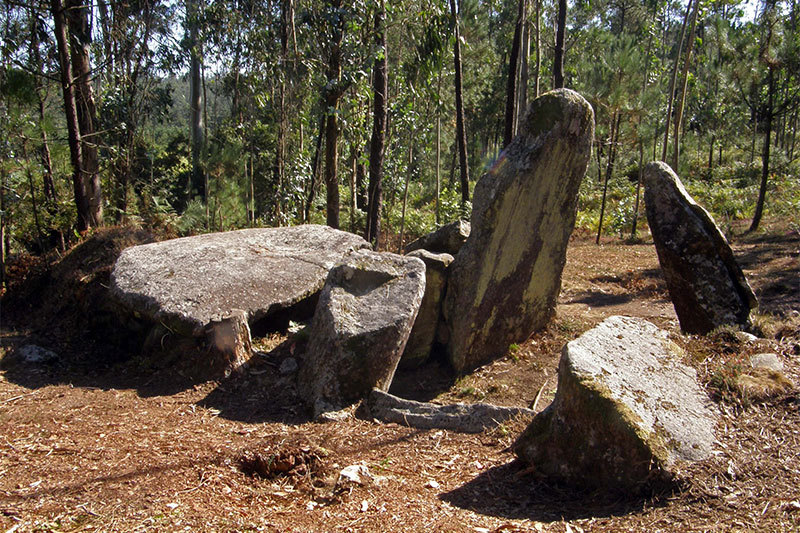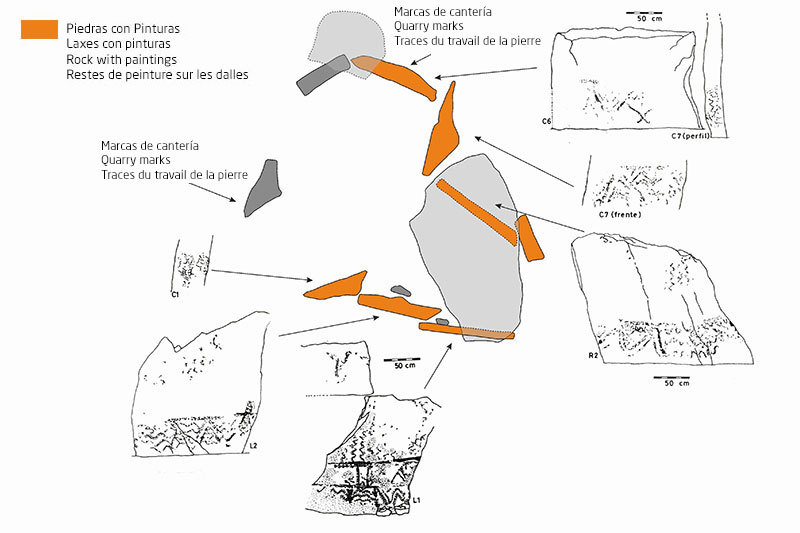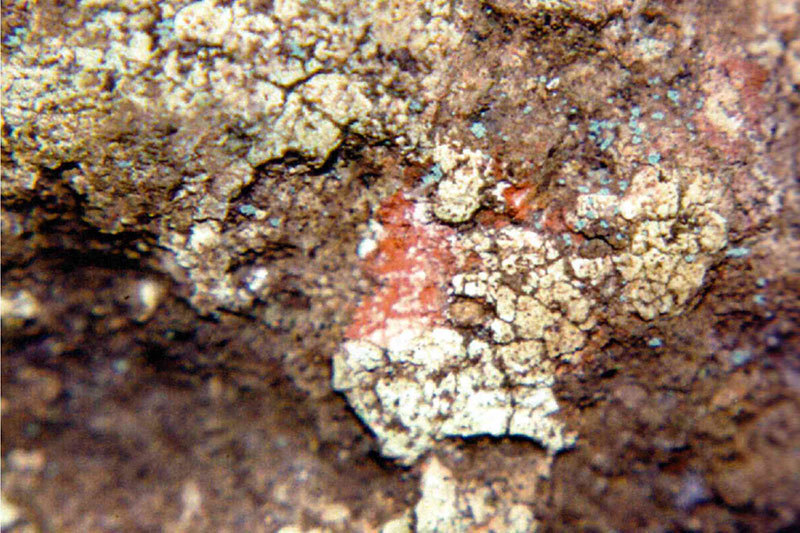When Georg and Vera Leisner arrived to this dolmen in 1933, it had already been dynamited ten years earlier. In fact, to this day a perforation in one of the rocks, pointing back to earlier quarry work can still be observed. In spite of this, it still maintains its original structure, as well as a good part of the mámoa and the stones of the chamber and passage.
This anta was the only one excavated by the Leisners in Galicia. According to the couple, the excavation contributed no archeological material, but did allow for the discovery of an extraordinary ensemble of paintings. The exceptional nature of the discovery was due not only to its being one of the first to be known at a European level, but rather mainly because it covered nearly the entire interior of the tomb (chamber and passage). All the designs are geometric, primarily vertical and horizontal wavy lines, as well as some concentric circles and triangles.
The motifs are painted over a first coat made from a base of kaolin which covers the interior of the stones regularizing the surface. Over this coat the different designs in red and black paints were then applied. Pigments were obtained from clays rich in iron oxides and vegetable carbons and then mixed with water and a binding substance that aided in the paint’s adhesion to the walls. According to the Leisners, micro-chemical analyses revealed that egg whites were the binding agent used at Pedra Cuberta.
Covered by moss and sediment, today the paintings are barely visible, although they are in a relatively good state of conservation.


